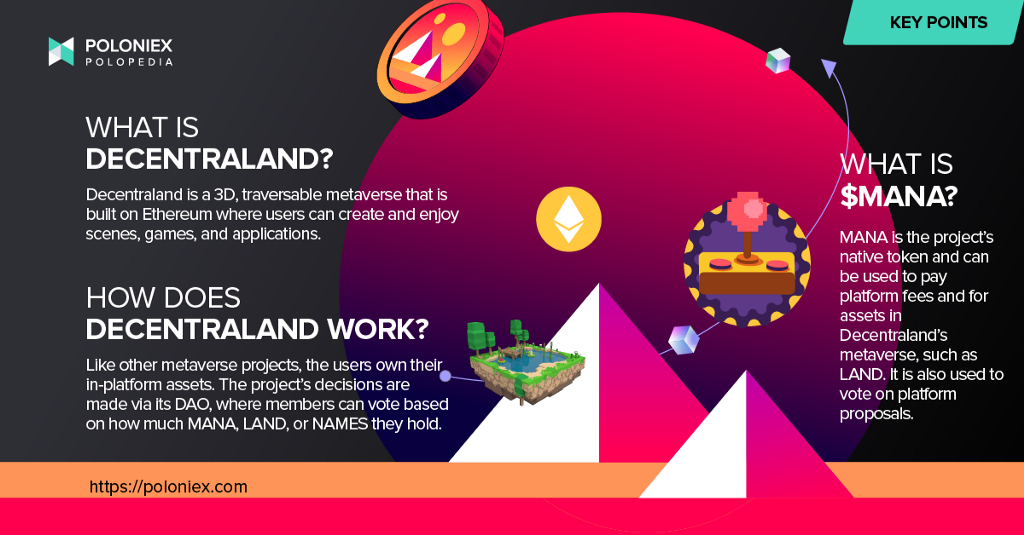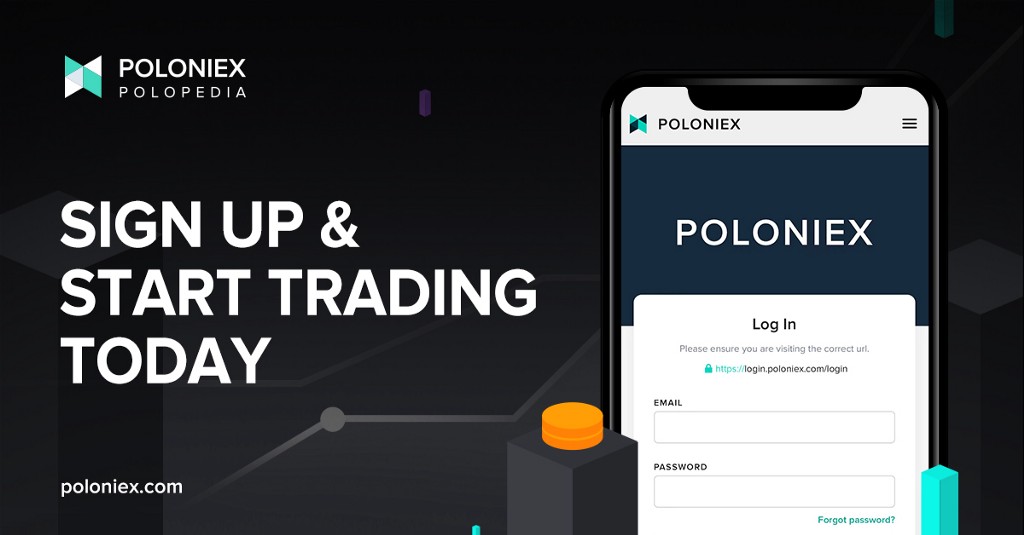
What is Decentraland?
Decentraland is a metaverse project of traversable, 3D virtual space that is built on Ethereum. In this space, players can interact with each other and projects that have a digital presence there. There is also a real estate component where projects and users alike can buy and sell LAND, Decentraland’s expression of land ownership. The goal of this project is to foster an environment where users come together to build a metaverse.
The space within Decentraland allows users to interact and create scenes, applications and games for people to shop, game and interact with each other.
3 tokens that make up asset ownership on the platform. We have NAMES, LAND, and MANA. The first two are ERC-721 (NFT) tokens and MANA is an ERC-20 (cryptocurrency) token used to buy LAND and NAMES as well as pay platform fees and interact with certain apps within this shared 3D world.
The project is governed by the Decentraland DAO, a decentralized autonomous organization tasked with project approval, the implementation of project changes, and fund allocation. Holders of MANA, LAND, or NAMES may vote on proposals.
So what can one do in Decentraland? Well, as it is a metaverse, creators may develop applications such as games or other experiences for the metaverse population to play and attend. There is also a social component where users can interact through their avatars. For creators, the project has made it easier to deploy applications through its SDKs. Decentraland also provides tools for creators to build 3D models, edit scenes, and add various features to their apps.
How does Decentraland work?
Users must have MANA within a connected wallet in order to interact with the Decentraland ecosystem. As Decentraland operates on the Ethereum blockchain, it uses that as well as its smart contracts to execute and track the buying and selling of LAND tokens.
The way land ownership is organized is that it is divided into what are called parcels, identified by their coordinates within the virtual world. Furthermore, it also contains a description of its makeup and an associated owner to identify it.
Decentraland’s architecture is made up of various layers:
Consensus layer: This is where land ownership is tracked and established. This layer contains rich descriptions of the LAND, such as objects and textures that are present in the asset.
Content layer: The content layer, or content distribution layer, is responsible for allowing users to download assets and facilitates the distribution of content used to render the Decentraland metaverse.
Real-time layer: This facilitates player-to-player interactions.
Decentraland has two other components which are their Payment Channel Infrastructure and Identity System which handle payments and allow creator ownership of original works, respectively.
In terms of how assets like LAND and MANA on Decentraland are traded, there is a marketplace that serves as the central place for users to exchange such assets.
Decentraland DAO
The Decentraland DAO is the governing entity of the project. Through this DAO, the community can vote on issuing grants and making various changes. These changes are done, as in other DAOs, through a process of submitting, debating, accepting, and executing proposals put forth by the community.
Responsible for enacting approved proposals is a committee, acting through a multi-signature wallet. The committee itself has oversight in the form of the Security Advisory Board, which is a body also responsible for implementing swift upgrades in the event that holding a vote might actually expose a bug to would-be malicious actors. Essentially, the Security Advisory Board is a group of industry experts initially chosen by the Decentraland team to help secure the DAO in the form of emergency changes to the project’s code, the execution of which must be decided upon through a vote in a multi-signature wallet.
For more information on what a DAO is, check out our article about DAOs.
The different tokens of Decentraland
There are several tokens at work in the Decentraland ecosystem. We’ll take a brief look at each:
MANA: this is the ERC-20 token used to vote on DAO proposals, pay for metaverse assets and platform fees, as well as in-game assets and application services. It can be bought and traded on multiple exchanges like Poloniex.
LAND: This is the ERC-721 token (NFT) that describes virtual land ownership. Each piece of LAND is a 16x16 meter square. It is bought using MANA, and divided into parcels. Parcels are LAND subdivisions with their own characteristics and coordinates denoting the location and unique attributes.
NAMES: Another ERC-721 token in the Decentraland metaverse, these are human-readable names that, according to the account selling them on opensea.io, “allow users to trade tokens between memorable addresses, e.g. ‘jane.dcl.eth’.”
Estates: Essentially, Estates allow LAND owners to associate two or more adjacent parcels of LAND and thus buy, sell, and keep track of a larger number of parcels more easily.
$MANA and what you can use it for
MANA, Decentraland’s native utility and governance token, is used to pay fees as well as for assets like LAND. It is an ERC-20 token, meaning it is traded over the Ethereum network. It has a burn mechanism whereby every time it is used to buy LAND, a percentage of it is burned. Because MANA is used for every transaction, it is effectively necessary to be in a user’s wallets in order for them to interact with the platform.
How to acquire $MANA
MANA is available on multiple exchanges like Poloniex! You can acquire MANA through trading a USDT, USDC, or BTC trading pair: MANA/USDT | MANA/USDC | MANA/BTC

Feeling ready to get started? Sign-up is easy! Just hop on over to https://poloniex.com/signup/ to start your crypto journey🚀
was originally published in The Poloniex blog on Medium, where people are continuing the conversation by highlighting and responding to this story.

